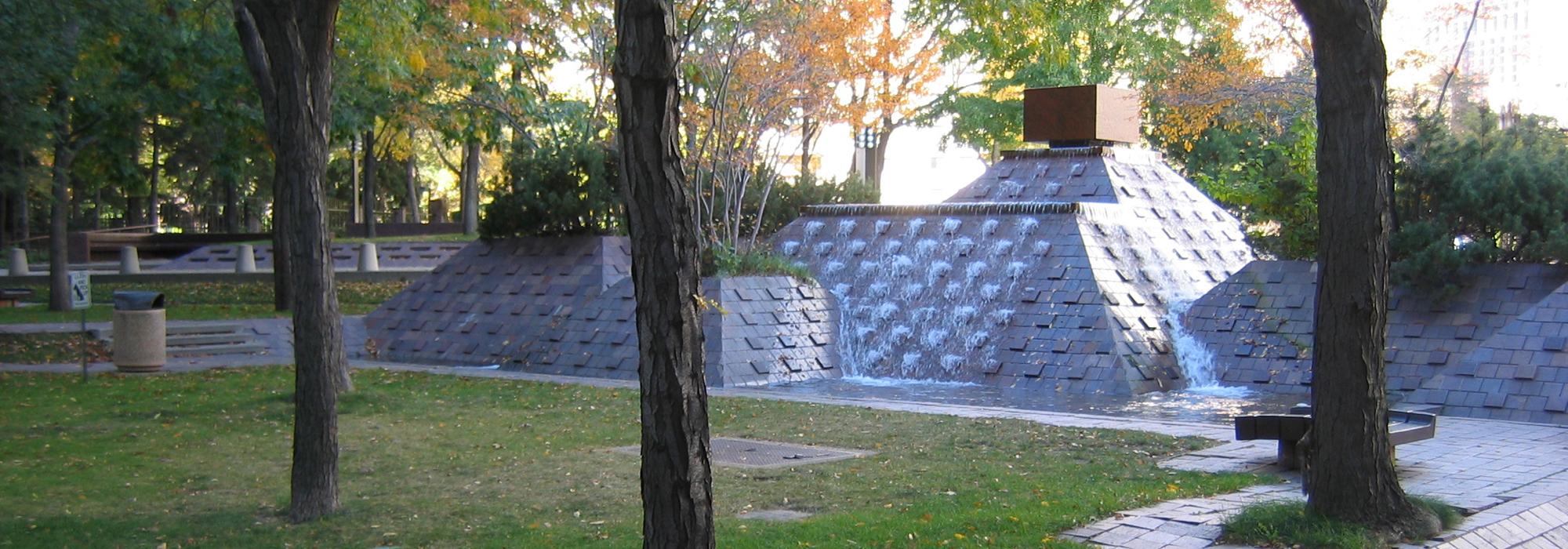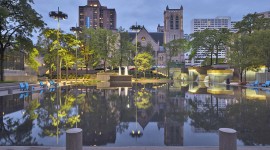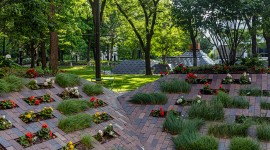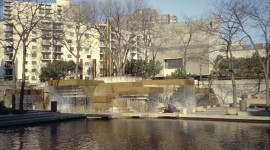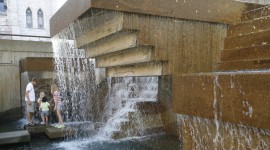M. Paul Friedberg on Change and Continuity in Landscape Architecture
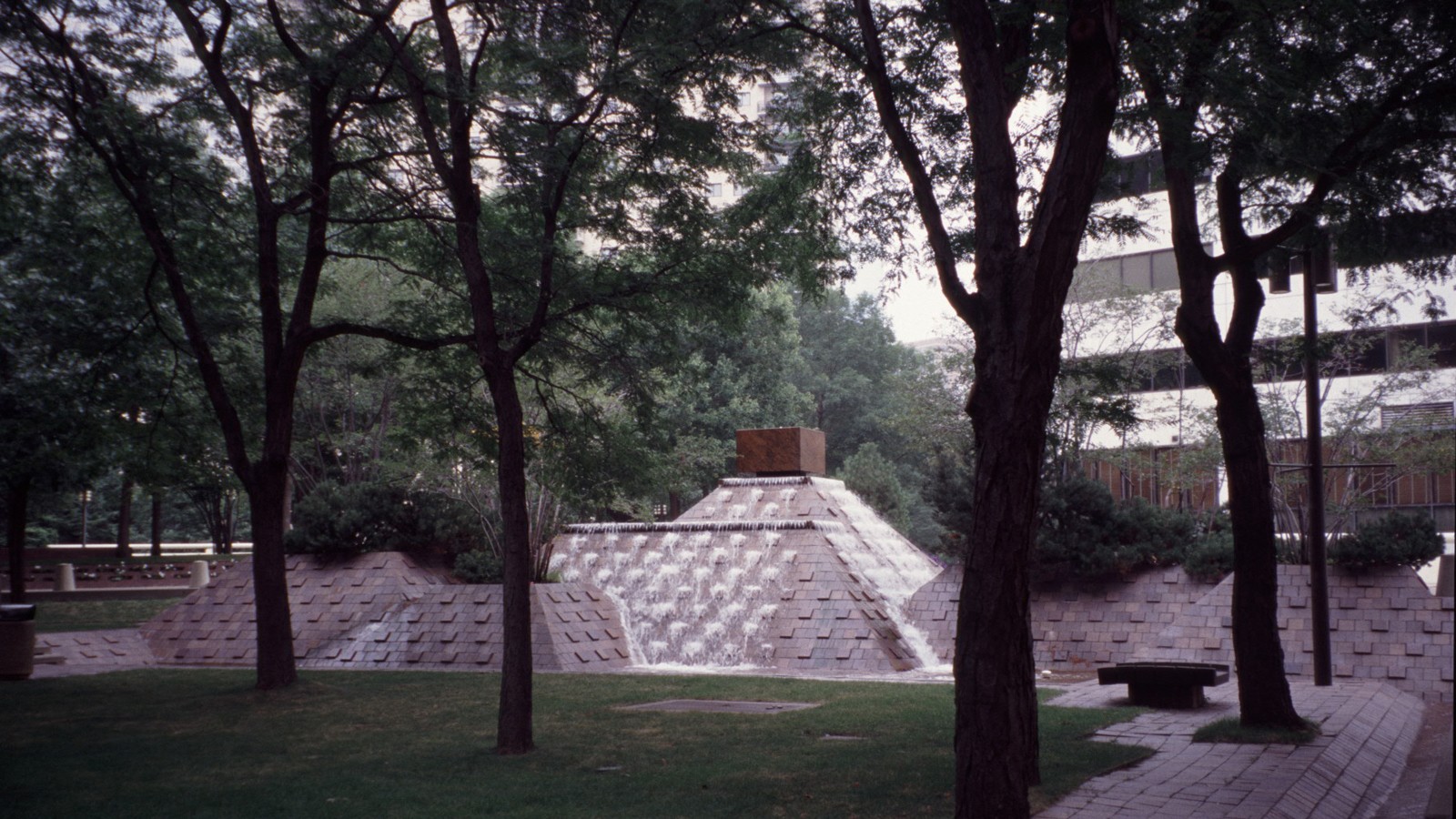
Editor's Note: This Special Feature is excerpted from Charles Birnbaum's Glass House Conversation hosted by The Philip Johnson Glass House which took place online from June 10 to June 24, 2012. The full conversation can be seen here.
There are dozens of modern buildings listed in the National Register of Historic Places and as National Historic Landmarks - In fact, to date, there are more than 1,000 structures that have been designated that are less than 50 years old and only a small number of works of landscape architecture. Although properties such as the Glass House, the Gropius House and Russell Wright's Manitoga have been designated as National Historic Landmarks including significance in landscape architecture, there are countless others from the Eames House (which is very much about landscape, and yet possesses no landscape significance) to significant projects by Lawrence Halprin, Dan Kiley, and M. Paul Friedberg that have not been recognized. Even worse, Friedberg's seminal masterwork, Peavey Plaza (Minneapolis, MN) is now facing the wrecking ball, while a road expansion threatens Kiley's landscape at the Cathedral of the Immaculate Conception (Burlington, VT) and Halprin's Riverbank Park has been the target of a generic and uninspired new design (Flint, MI).
What role can architects, landscape architects, historians, historic preservation professionals, journalists and bloggers do to instill value for the legacy of landscapes?
What can and should be done to nurture an informed public debate about the legacy of modernist landscapes and reverse the trend of demolition?
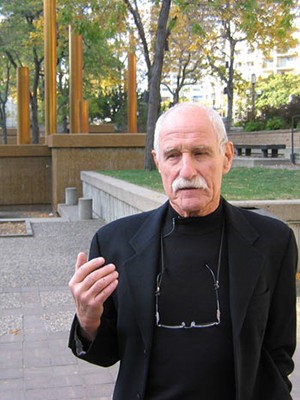
I am honored to be included in the forum on preservation however when I have to write I usually resist as the written word is not my medium. However, as a project of mine - one that I am particularly fond of - is currently under attack by local politicians and corporate functionaries, a few words might help to sooth my anger.
Those behind this impending destruction are people without the authority, intellectual education or experience to deal with serious design issues.
I challenge their right to make a change that will ultimately affect the community and our profession.
Change is inevitable. My work and dedication is about change. It is a process that is neither pure nor ideal. There are paradoxical situations in which I am required to destroy to create. Times when the decision to destroy is painful, particularly painful when a bucolic site is demolished for development. However all change is ultimately a matter of balance measured against the result. Does change provide for need,demonstrate progress or expand the vision of what it is to replace? These are a few of the values that are the measure and justification for change. I have resisted preservation for its own sake as it stymies progress and can lead to stagnation and the suppression of new ideas. Therefore it is when a thing of value is destroyed to be replaced with something of lesser value that I take issue with that change.
Therefore there is a need to have in place a process of adjudication that makes the determination rather than a pickup group that wields power.
So then who should adjudicate? In law we leave this in the hands of the qualified professional and the public. These matters are judged or supervised by professionals trained to make these evaluations. So why then do we accept the destruction of our public landscape by those least capable of making these decisions. Decisions that are vital to our collective interest. We leave these important decisions to politicians whose views are tainted by personal advantage or the misguided conclusions of administrators.
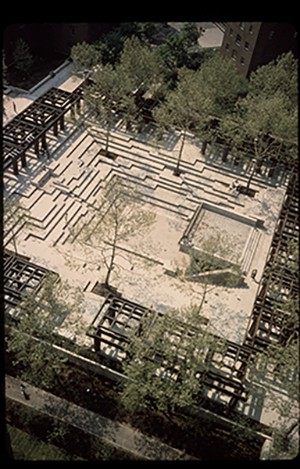
One of the most seminal projects of mine, Jacob Riis Plaza, a project designed over fifty years ago that altered our views of the open space of public housing was ordered destroyed by a functionary, an administrator. His rational I am told was to eliminate the sale of drugs from the site. In the process he destroyed a vital example of how the design of the landscape adds social value and creates pride in ones environment for residents that need it most, low income.
This project was an invaluable teaching tool and cannot be replaced by pictures and words.The students of our profession lose when they do not have meaningful and palpable examples to visit and experience. So too do the public for they lose the means to measure good design and only the best equipped professionals can serve their needs. In the end all the administrator accomplished was the dislocation of the dealers to a different location as the problem was never a design issue but rather a social one.
So the question remains, who gave him the right to make this decision? We did, as we do not value the landscapes we share enough to assure their protection as we do with architecture.
What is ironic is the landscape directly serves us, the public, as we can inhabit it, use it and be nourished by it while architecture is to be admired.
This was never meant to be a finger shaking accusation but rather a simple call for us to question and evaluate what is important to us personally and how to protect it...

I live next to Central Park. It may be an egregious example for it is a part of our national heritage and well known. What is important is that this landscape, in its varied forms gives this city its identity, elevates and nourishes us, the community. My life would be diminished without it. There is no concealable reason to destroy it for an alternative even though there are many options. We, the community and professionals of this city have collectively agreed that no alternatives are better and it is protected by public opinion. Someone or ones decided to create this park and we, the community, preserve it. It is the way we value this park, by how it serves us, that we should value and evaluate all our public space. As all public space does not enjoy the means of protection that Central Park does a formalized means of evaluation and protection against arbitrary destruction should reside in the hands of those who are qualified. Let's do it.



